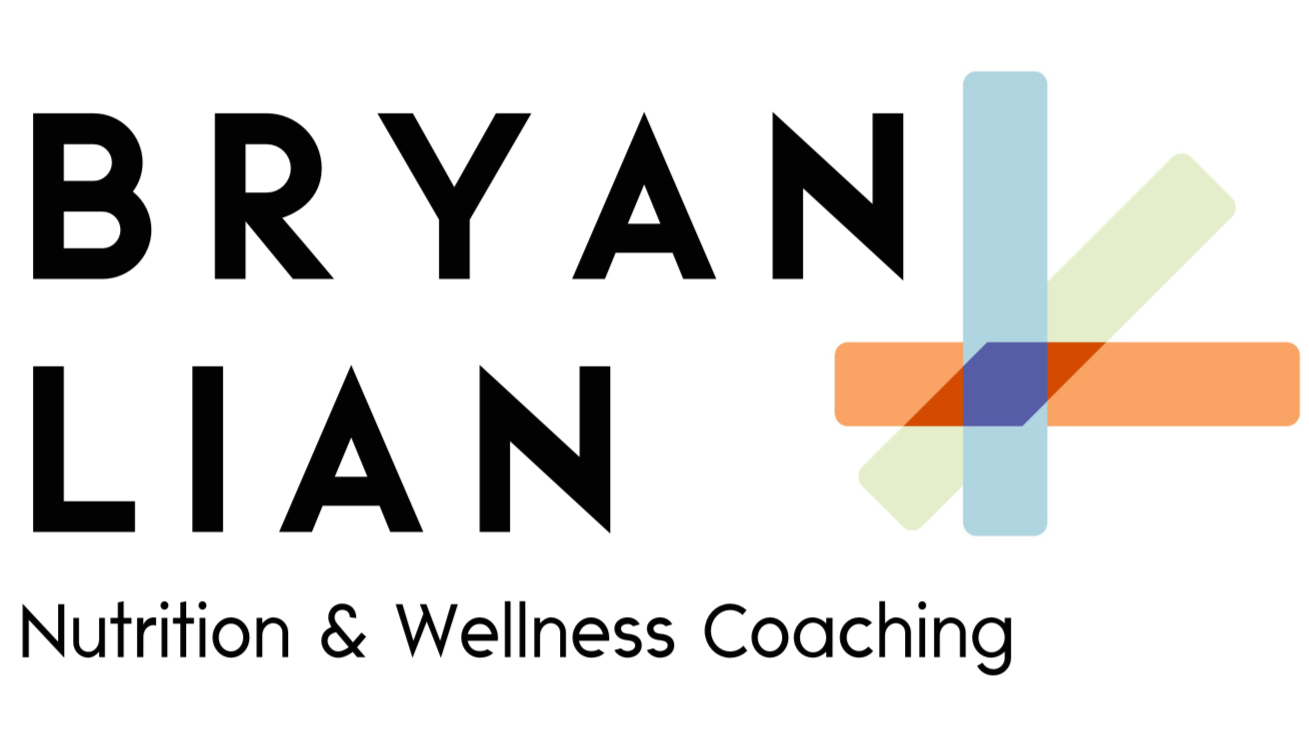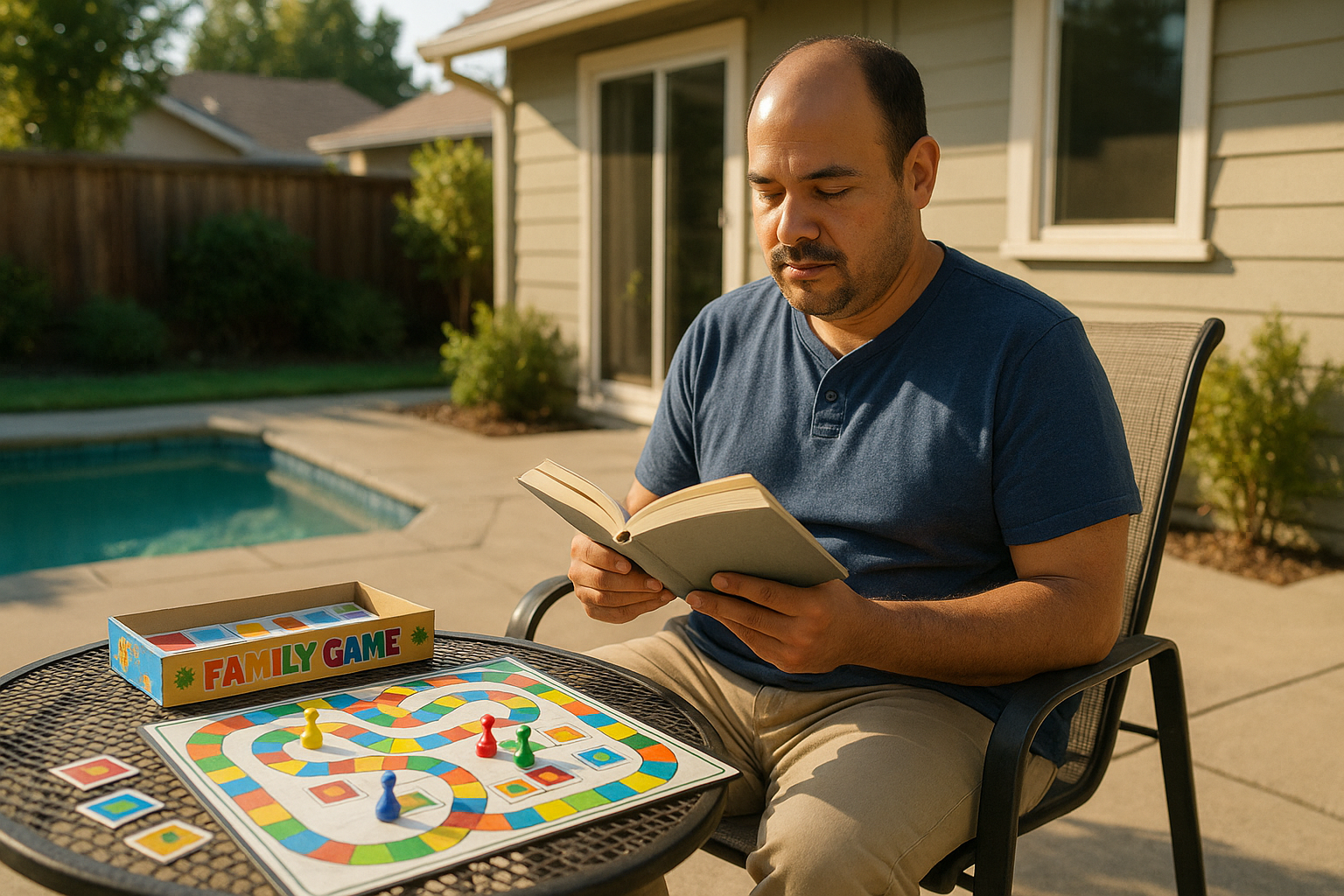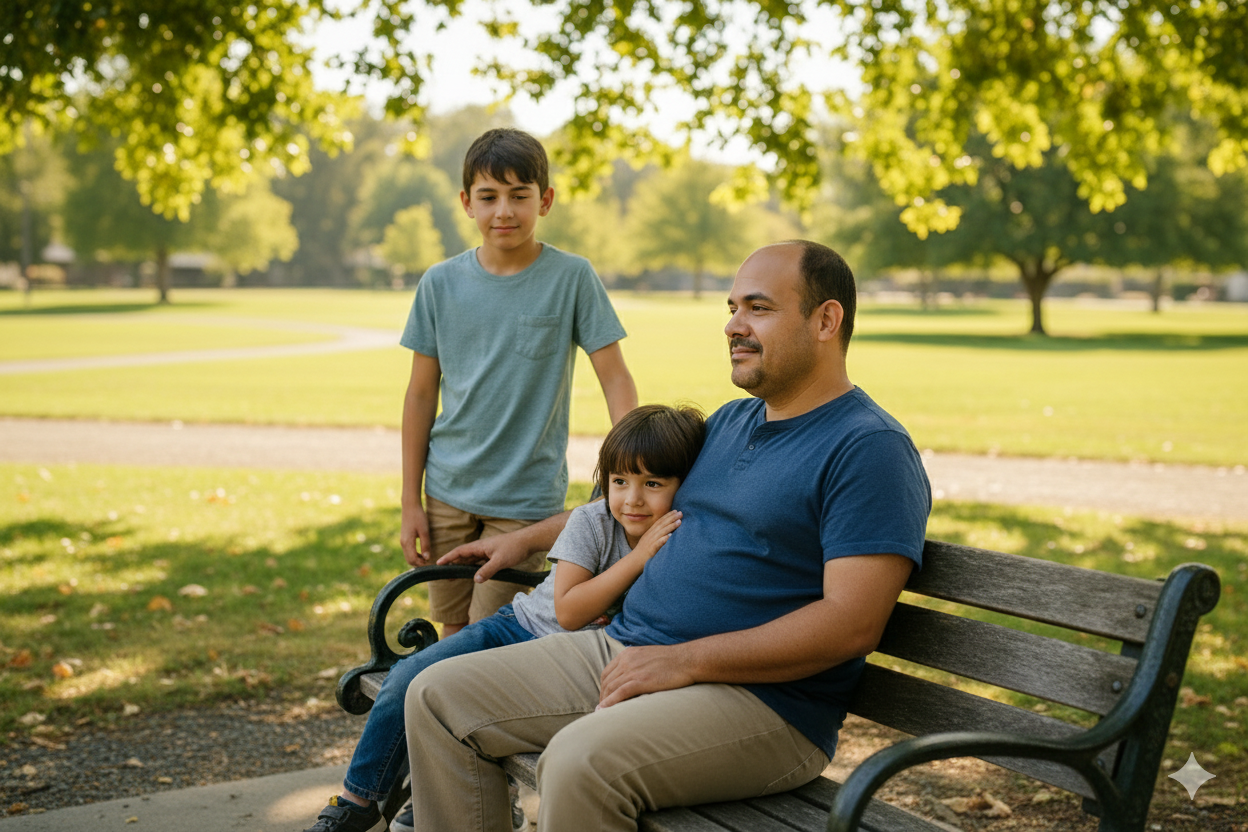Meet Luis
“If I Slow Down, Everything Will Fall Apart… But Pushing Through Keeps Making Me Worse.”
Luis is a 42-year-old Latino project manager and parent, working remotely while juggling career demands and family life. He loves reading outdoors, playing board games with his kids, and swimming when he can.
But ever since post-viral fatigue and pain flares set in, his old “push harder” strategy only makes things worse. Rest feels like failure, and asking for help feels like losing status.
Instead of getting ahead, Luis finds himself caught in a cycle of overdoing, crashing, and fearing he’ll never get back to normal.
Luis’s Journey
From Hustle to High-Leverage Rest
Luis didn’t need another pep talk about grit. What he needed was a way to honor the limits of his body and stay true to his role as a leader — at work and at home.
At first, he feared slowing down meant letting his family down. But instead of treating his energy as a solo resource to protect, he began treating it like a shared family asset. Together, they created a rhythm where his rest was not selfish, but strategic — a way to invest in the whole household.
What he was really looking for was:
Energy management that worked with his new limits
Support systems that reflected his parenting values and family culture
A mindset shift where rest wasn’t weakness, but teamwork
A path back to swimming and movement without fear of crashing
The Breakthrough
High-Leverage Rest & Pacing
For Luis, the change came when he learned to treat his energy like a finite resource — more like venture capital than an endless grind. Together, we built a sustainable rhythm that prioritized clarity over burnout.
That looked like:
Anchoring a sleep routine with light exposure, caffeine cutoffs, and wind-down rituals
Using pacing tools like the energy envelope and flare-trigger mapping to prevent crashes
Adding anti-inflammatory meals and hydration to support recovery
Inviting his family into the process — from walking breaks to shared meal prep — so support felt cultural and collaborative
Designing a graded re-entry plan for swimming, starting small and building back confidence
Instead of resisting rest, Luis began to see it as the highest-leverage investment in his work, family, and health.
What Changed for Luis
With this new approach, Luis could:
Establish a daily “Rest Lab” routine without guilt
Lower his fatigue score by two points
Successfully pace through three high-stress work days without crashing
See his family not as a drain on his energy, but as a team who could share it wisely
The result? A body that supported his leadership at work and his presence at home — not one that held him hostage.
Note: These personas are fictional and created to represent patterns we see in our work. They are not drawn from any client’s personal health information. If parts of these stories feel familiar, please know it’s coincidence, not intention.



